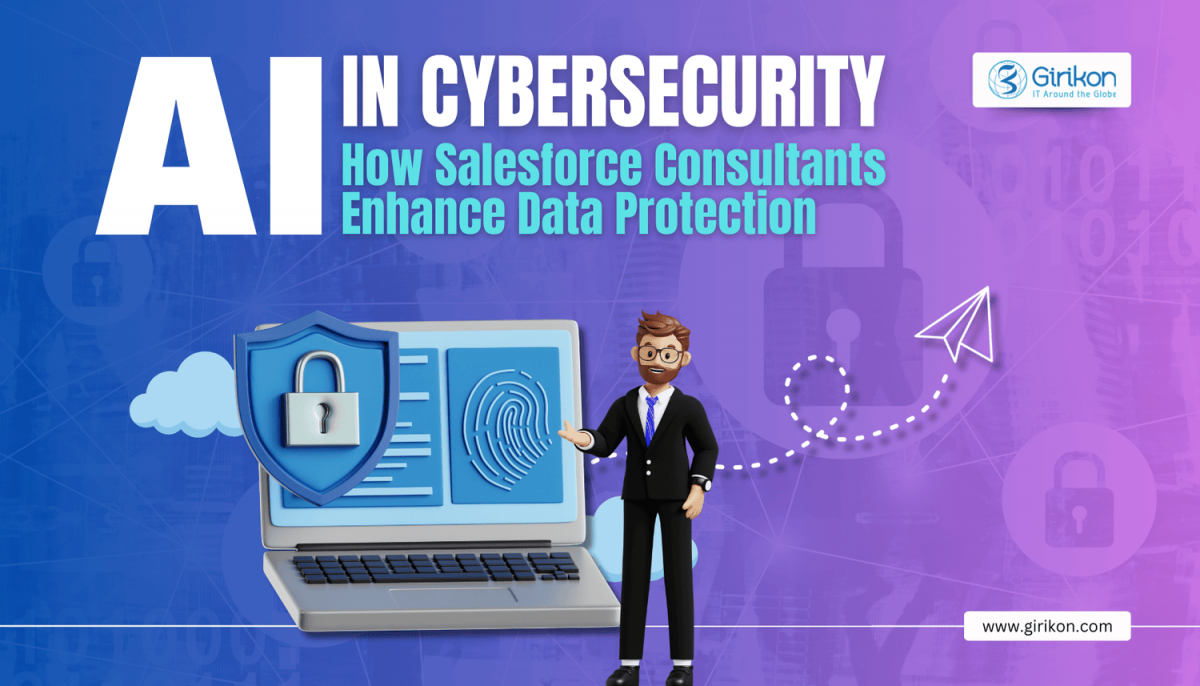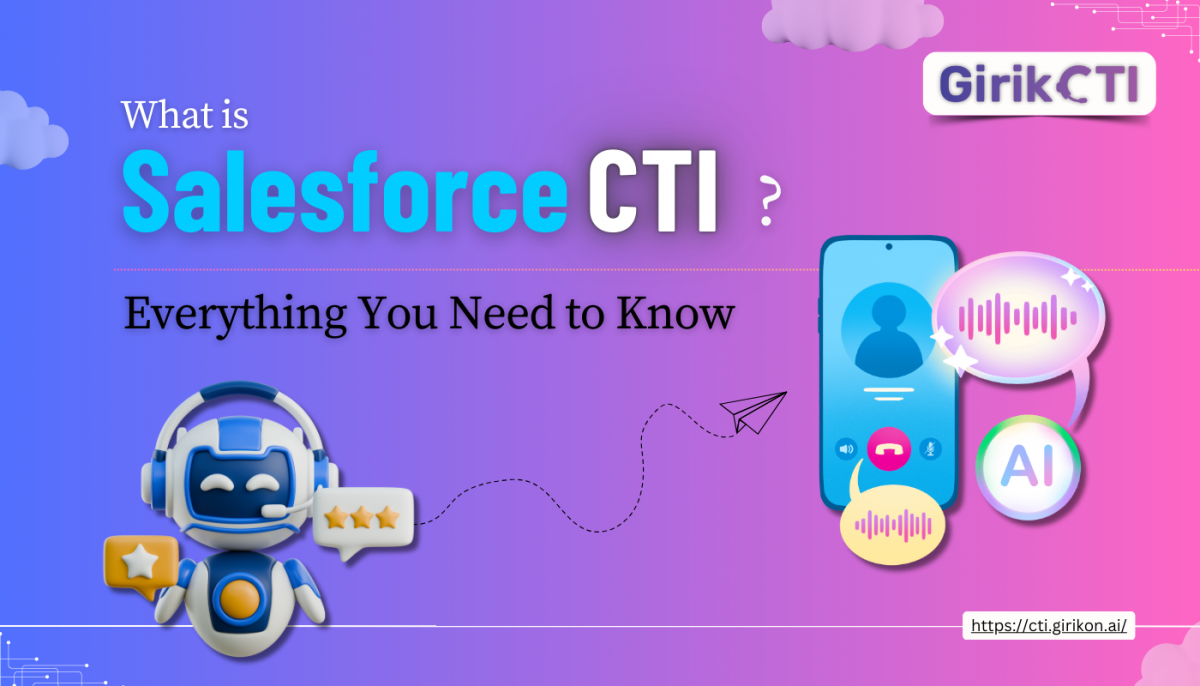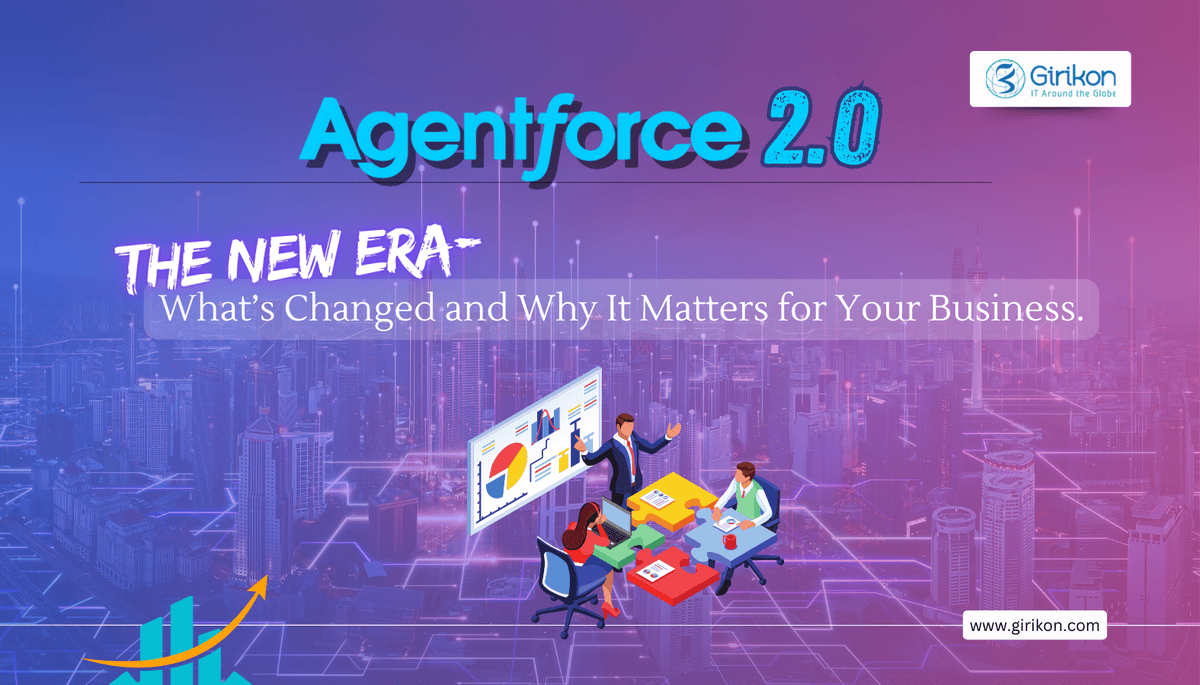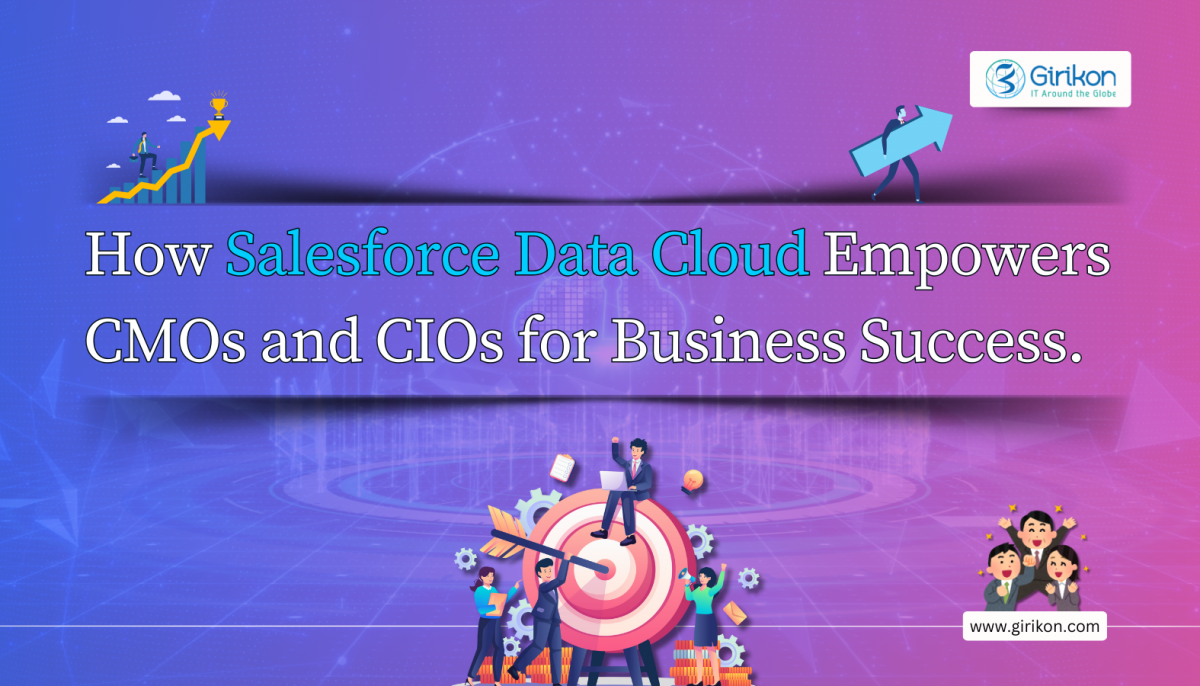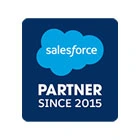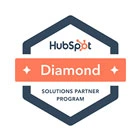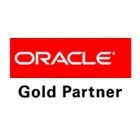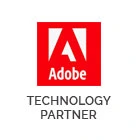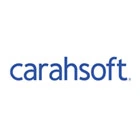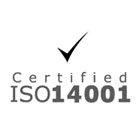With Vaccine Cloud, healthcare organizations and governments can more efficiently manage supply, delivery, execution, and logistics of vaccine programs and communicate faster wit beneficiaries, all on a platform that is trusted, secure, flexible, and quick to deploy. As more and more vaccine doses become available, people can pre-register for a spot in the queue. This allows healthcare organizations and governments to quickly and objectively schedule programs and forecast inventory at scale. Recipients can be sent personalized sign-up invites to enable them to schedule appointments directly. When they arrive for an appointment, clinical staff can access their medical records and get a 360-degree view of their immunization history and personal health information. Clinical staff can then take advantage of the latest public health guidance measures, allowing them to follow best practices and deliver great care. They can also update the recipient’s record to reflect any dosage specifics and administration information. Key metrics from these processes provide clinical officials with insights on the progress of their vaccination programs. These insights can then be swiftly converted into action based on reported health concerns, availability of stock, and vaccination preparedness.
Key Components of Vaccine Cloud.
HEALTH COMMAND CENTER
Get a complete view from a single dashboard to manage your vaccination program better.
Health Command Center gives governments and healthcare organizations a complete 360-degree view of vaccine management to drive data-driven decisions. You can use up-to-date vaccine inventory data and demand forecasts to streamline and optimize your vaccine program.
· Drive data-driven decisions based on vaccine needs and availability
· Ensure rapid response with a 360-degree view of vaccine programs
· Centralize all data into a single dashboard to drive faster responsiveness
VACCINE INVENTORY MANAGEMENT
Drive rapid mass vaccination with accurate forecasting.
Vaccine Inventory Management helps healthcare organizations and governments to ensure availability of stock and maintain adequate supply of doses, syringes, and PPE levels. It can also assist in forecasting demand, help reduce wastage, and rule out surplus supplies.
· Take advantage of a single solution for planning and prioritization
· Use Salesforce’s intrinsic robust inventory management to manage stock
· Streamline supplies to forecast demand and trim wastage
VACCINATION APPOINTMENT SCHEDULING
Centralized scheduling to drive efficient vaccine distribution.
With Vaccine Cloud healthcare staff can now easily conduct health assessments. It also allows you yo assess eligibility of recipients and schedule appointments. Not only that, acquiring digital consent and ensuring vaccine availability as and when needed is now easy.
· Manage registration and eligibility of recipients
· Pre-screen recipients and capture digital consent
· Drive on-demand scheduling with QR codes for contactless visits
ASYNCHRONOUS REGISTRATION AND SCHEDULING
Securely scale vaccination registration.
Through a robust and comprehensive web experience, organizations can gather recipient registration information, apply eligibility and inventory rules, and notify them via personalized emails about when an appointment slot is available.
· Streamline vaccine registration with a scalable and equitable process
· Take advantage of eligibility and prioritization and to connect people to appointments effectively
· Scale your program in-person, online or through call center registration for all recipients of your community
CLINICAL VACCINE ADMINISTRATION
Gather accurate vaccine information and prepare for distribution.
Clinical Vaccine Administration ensures clinical professionals are trained adequately before vaccine administration to prevent onsite bottlenecks. Data analysis tools allow vaccine administration agencies to assess readiness, log and track vaccine allotment, and analyze results.
· Augment safe vaccination practices with pre-arrival screening
· Analyze community-wide vaccine outcomes in conformity with public health guidelines
VACCINE OUTCOME MONITORING
Monitor post-vaccination outcomes with data capture.
Enable healthcare organizations and clinicians to follow up with recipients with surveys to assess their health outcomes. Streamline digital surveys with email, web, SMS and phone.
· Log recipient experiences with surveys and manage health outcomes
· Streamline communication amongst officials and the public in case of post-vaccination events
ENGAGEMENT AND AUTOMATION
Engage the community throughout the vaccination journey.
Empower health officials to interact with the community through notifications, and launch education and outreach campaigns. Ease staff burden by automating repetitive communications, such as dose reminders.
· Notify people for the next dose
· Alert delivery agency managers to replenish stock based on appointments
· Track recalls and trace back needs from adverse events
VACCINATION VALIDATION
Generate and verify health credentials for transparent proof of vaccination.
Generate health credentials during the process of vaccine administration.
· Capture and manage digital credential records
· Verify health credentials for proof of vaccination
· Integrate seamlessly with prevalent Digital Credential standards
Here’s a look at how Vaccine Cloud Helps deal with challenges to implementing Vaccine Programs.
Vaccine Velocity
In the current context of the pandemic, it is imperative for governments, public health groups, and healthcare organizations around the world to efficiently and effectively manage their vaccination programs.
Once the vaccines are developed, there are several other challenges to consider.
Overwhelming demand: Public health groups are under immense pressure to deliver vaccines. Healthcare groups and agencies must manage their inventory better and administer vaccines to the appropriate groups while preventing any wastage. Delivery and logistics challenges: It is imperative to maintain vaccine quality throughout its journey from production, to packaging to storage and distribution to streamline the entire supply chain. Clinical staff shortage: COVID-19 vaccines follow-up doses. Existing systems and staffing plans are not designed to handle the distribution and delivery of multistage vaccines to billions of people in a short period of time. Vaccination outcome monitoring: It’s essential to capture data on recipient experiences, health results, and outcomes once they are vaccinated. Communication challenges: High volume of vaccination programs makes consistent communication with high-risk populations about the program a daunting task.
Addressing the challenges
Public health organizations and private businesses must collaborate to tackle these challenges. Salesforce launched Vaccine Cloud with an objective to facilitate that coordination. With Vaccine Cloud, health organizations and groups can easily design, launch and manage vaccine programs from start to finish. Vaccine Cloud takes advantage of native Salesforce products to empower healthcare providers, businesses and governments deliver vaccines at massive scale efficiently and equitably.
Solution What It Does Why It’s Important Health Command Center It shows vaccine inventory levels and forecasted vaccine needs in a unified single console. It helps health organizations to make data-driven decisions based on vaccine needs. Vaccine Inventory Management It forecasts demand for vaccines and related supplies. It trims product wastage and prioritizes the deployment of inventory. Appointment Scheduling It schedules and manages vaccine appointments, acquires digital consent, and helps clinicians to establish eligibility of recipients. It encourages recipients to do self-service and promotes on-demand appointment scheduling. Clinical Vaccine Administration It trains medical staff for vaccine administration before administration of vaccines, manages overall community health, logs and tracks delivery and administration of vaccines, and analyzes community-wide results. It promotes pre-arrival digital screening and safe vaccine administration practices. Vaccination Outcome Monitoring It captures data on recipients post vaccinations. It helps clinicians to swiftly follow up on recipients if there’s a health concern or a emerging trend in the wider community. Health Notifications It delivers personalized outreach campaigns, sends reminders to recipients, and alerts clinical staff on restocking needs based on future vaccination schedules. It automates repetitive communication and eases staff burden. Digital Credentials It provides verifiable, trusted, and secure certifications that let participants easily share health or vaccination status easily, privately and securely if they choose to do so. Allows organizations to safely reopen public places.
Girikon is a certified Salesforce Consulting Partner and can help you effectively and efficiently manage your vaccination programs. We will be happy to answer any questions you might have about Vaccine Cloud.
Want to know more?
We know that time is critical, so collaborate with us to help you deliver an effective and efficient vaccine program.
CONTACT AN EXPERT
Background
The manufacturing industry is a vital cog of the global economy. Globally, manufacturing output exceeds $35 trillion across the 34 largest manufacturing regions. This sector is also on the verge of renewed productivity, innovation and efficiency as technology innovation heralds the next generation of manufacturing in an connected ecosystem powered by intelligent analytics.
Salesforce Manufacturing Cloud was designed with an intention to help drive this transformation with a solution specifically designed for manufacturers to unify accounting and forecasting for greater transparency and collaboration across their entire ecosystem. This unified platform provides a clear view of customers with account-based forecasting solutions that enable them to precisely forecast, plan, and drive improved business outcomes.
What is Manufacturing Cloud?
Salesforce Manufacturing Cloud is a new offering from Salesforce, specifically designed for manufacturers. It is an AI-powered, cloud-based manufacturing platform, built to take the industry to the next level of digital innovation.
Unify customer-centric operations across the organization
Prebuilt objects, frameworks and processes for manufacturers
Unmatched innovation, including minimal-code tools and integrated AI
Helping manufacturers align sales and operations
One of the key success criteria in the manufacturing industry is building great products great products and meeting market demand with efficient production and fulfilment. The first step in that process is to ensure accounting teams have holistic visibility of the book of business for a customer. That includes ongoing business, business run rate and potential opportunities. This visibility translates to more accurate forecasting, more predictable outcome, and eventually, more revenue.
Predictability is the top priority for all stakeholders in the manufacturing ecosystem. Customers want to be sure about pricing, availability and delivery; distribution partners need efficient delivery channels; sales teams need pricing based on real-time volume assumptions; and operations teams want to build and procure components based on the most accurate forecasting.
To achieve all this, manufacturers must have a clear understanding of the entire shipment history of a customer, current production plans, and production forecasts. One of the key challenges most manufacturers face is information and data stored across multiple systems such as ERP, CRM and SCM. And with the involvement of various teams, the whole process faces resistance and makes the sales and operations process hazy. And to make things worse, those closest to the customer- sales and distribution partners are not accurately represented.
In the current manufacturing ecosystem, there is gaping opportunity to link customers, sales teams and distribution partners to change the entire operational paradigm. Going forward, manufacturing leaders around the globe will set a new standard for connection and engagement with their customers. To achieve this would require complete access to previously stored data and to be able to extract insights out of that data.
How Manufacturing Cloud works
Manufacturing Cloud was created to align sales and operations, to improve the sales forecasting process for both current operations as well as new business opportunities, and to extend the new process to partners. Here’s how.
Sales agreements allow manufacturers to unify current business with data stored in external systems such as ERP with agreement terms so both accounts and operations teams have a 360-degree view of the customer. Sales agreements are automatically updated with changes, thus providing a single source of truth. Account teams can now manage the full sales agreement cycle with clear visibility into promised and actual order volumes. They can also view the performance of the agreement vis a vis the forecast and other metrics.
Account-based forecasting provides insights across the business to allow operations, sales and finance teams to get more accurate forecasts. Account teams can easily update changing customer needs based on market demands, which in turn allows the productions team to adjust plans and estimates in real time, thus making transactions, profits, and revenues more predictable.
Many manufacturers also sell their products through a fleet of distributors and dealers who have feet on the ground and true knowledge of changes in customer demand. Manufacturing Cloud integrates them into the forecast process with a pre-built collaboration driven community template.
With this revolutionary capability, manufacturers now have an opportunity like never before to get real-time insights into product and customer performance, and the agility to translate these insights into action. That’s the hallmark of an agile business.
Intelligence at the core
Manufacturing Cloud is a key part of Salesforce’s design philosophy – Customer 360, which allows manufacturers to deliver smart field services, channel management, B2B Commerce, and much more, on a single platform across their business.
One new feature of Manufacturing Cloud is Einstein Analytics for Manufacturing. Account managers can now get intelligent analytics with KPIs across important data sets like account health, market penetration, price information and demand insights. By unifying and analyzing these data points, account managers can proactively engage with customers to grow the relationship. Also, by identifying these key trends, account managers can recommend upsell and cross-sell opportunities.
The analytical ability is integrated directly into the business process of the account teams that provides real-time insights into sales agreements, forecasted performance, and customer interactions to predict the overall health of the business relationship.
In the past, account teams obtained this information in chunks from different sources and in various formats, and often outdated. With Manufacturing Cloud, manufacturers now can embed it into their entire business process.
With Einstein Analytics the platform is flexible and adaptable to cater to changing business needs. The insights around products and customers, will drive forecasting accuracy.
Manufacturers today need to navigate greater complexity and the disconnected manual systems of the past won’t work in todays connected world. Leading manufacturers are
Manufacturing Cloud enables all manufacturers to do capturing, integrating, and analysing data from across their organization to drive better business outcomes. All that with a single platform for unifying, exchanging and acting on information. It’s the force driving digital innovation and the next generation of manufacturing leaders.
How can Manufacturing Cloud help my business?
Unify the digital journey on a single platform.
Build a unified view of your entire business, transform service experiences, simplify partner engagement, and make data-driven decisions with Customer 360.
With Manufacturing Cloud you can strengthen partner engagement, streamline and monetize service, unlock data for greater impact, and increase employee productivity and agility.
MODERNIZE COMMERCIAL OPERATIONS.
A unified platform will accelerate your sales cycles makes it easy for customers to do business with you:
Manage recurring business on a single platform that is designed for manufacturers
Track performance against sales agreements
Forecast demand
SIMPLIFY PARTNER ENGAGEMENT.
Suppliers and partners are key elements of the manufacturing value chain. Improve performance with:
Streamlined and collaborative business processes
Shared visibility of agreements, orders, cases and forecasts
Channel incentive programs
TRANSFORM THE SERVICE EXPERIENCE.
Manufacturers need to offer unified experiences to customers, partners, and employees. Transform your experiences by:
Automated service processes and self-service to Improving satisfaction
Improve field service performance while minimizing disruption
Discover new service revenue streams on a unified platform
ENABLE THE WORKFORCE OF THE FUTURE.
Attract top talent and empower them by providing employees with the tools to do their work from anywhere:
Deliver productive, collaborative experiences on a single platform
Scale expertise through knowledge and information access, analytics, and AI
Ensure compliance and drive efficiency with business process automation
UNLEASH YOUR DATA.
Unlock disparate data and make faster, smarter decisions with AI-driven intelligence:
Deliver data when and where it’s needed across your business
Acquire insights with integrated analytics and AI
Transform insight into action by engaging on a unified platform
Key Features of Manufacturing Cloud
Forecasting Frameworks
Get a complete view of predicted volumes and demand.
Sales Agreements
Build a source of truth for your business.
Manufacturing Data Model
Loaded with prebuilt objects, frameworks and processes for manufacturing.
Embedded Analytics
Make quick, informed decisions with out-of-the-box dashboards
Digital Process Automation
Deliver manufacturing centric experiences and automation.
Rebate Management
Grow trusted relationships with channel partners with powerful incentive programs.
Want to know more about Manufacturing solutions from Salesforce?
CONTACT AN EXPERT
Whether you are already running a Salesforce instance in your organization and would like to upgrade it, or you want to set up a Salesforce implementation from scratch, you will probably need the expertise of a Salesforce consulting partner.
With the global adoption of the world’s No.1 CRM platform, the Salesforce consulting partners network has been growing over the years, ranging from individual consultants to global partner firms, offering extensive expertise across Salesforce products and industries and third-party apps.
But, how do you find a consultant that is best suited for you? Here are the top 9 mistakes companies usually make when Salesforce consulting partner and how to tackle them.
Mistake #1: Not having a clear definition of business goals
As a business leader you are expected to show the way. It’s not the job of a consultant. Before you decide what type of implementation you want, it is critical to understand why you need the proposed solution in the first place. How does it address your business goals? What problems is it going to resolve for you? What direction do you want your business to take post implementation?
Without a clear understanding of these aspects, you may end up squandering time, money and effort on an underutilised Salesforce implementation and never really realise its full potential.
To set the right direction for your business with the help of your Salesforce implementation, you need to clearly define:
Determine Business Objectives – Enlist what you wish to achieve with the Salesforce platform, just in the immediate term, but over a 3-4 year period.
Define Optimal Project Schedule – Set realistic expectations you’re your project execution timeline. Typically, implementation times take months for for mid-size businesses.
Define your budget – Do thorough research and establish the budget range you are willing to invest into Salesforce implementation and administration going into the future over a 3-4 year period.
Establish your Partnership Model – Determine the implementation scenarios of your project based on budget, time and resource constraints: will your Salesforce Implementation Partner perform complete implementations, will you split responsibilities with your partner, or you will do everything with internal resources while being guided by your partner.
Define Project Stakeholders – Identify key people from your team who you want to involve in your project implementation. Amongst them, identify a champion who will drive the project.
Define Salesforce Partners Roles – Identify the project roles and responsibilities that can be outsourced to your partner. Draft an RFP based on these roles which will help you to simplify discovery sessions with your prospective partner.
Mistake #2: Lack of Basic Salesforce Knowledge
This step is often overlooked. To be on the same page with your implementation partner or consultant, you need to be familiar with the most common terms and capabilities of the Salesforce platform. Educate yourself with product demos, Case Studies and Whitepapers on the Salesforce websites to know about the features relevant to your business domain. Knowing how Salesforce has helped companies around the world in your domain, will help you speak the same language as your partner.
Mistake #3: Prioritizing Price over Quality
Yes, you would like best Salesforce Consulting Partner your money can buy. And there is always a tendency to attracted to cheaper offers.
But sometimes, when you hire a low cost alternative with tight budgets, there are costs overruns and hiring that consultant may actually result in even higher running costs than originally planned, schedule overruns or worst case, project failure.
Eventually, you may decide to invest only in Salesforce developers. Initially it may seem financially viable. However, if your developers do not have holistic expertise on the domain as well as the product, you may end up with an implementation that may either be underdeveloped or well developed but under-adopted by your end-users.
Which is why Salesforce recommends working with Salesforce Certified partners so that there are no surprises in the long run. It is an expensive option compared to others, but the chances of success are much higher.
Mistake #4: Underestimating the power of reviews
All companies design their websites to look great. And why wouldn’t they? They want you to think that are the best at what they do. However, that’s not the entire story. But what are their clients saying about them? Customer reviews on AppExchange are a great indicator of customer satisfaction levels. Read reviews to know what’s good and what not about a product or app. There are also third part websites which publish reviews of companies for their services.
Mistake #5: Rushing into a decision
Investment into a Salesforce implementation is a huge decision. There is absolutely no reason to rush into it just because your competitors are doing it. Take your time, understand how a partner can help you and make an informed decision.
Ping your network for references, surf through Salesforce platforms like AppExchange and the Trailblazer Community to access a larger pool of consulting companies. Go through their portfolios in detail. Browse through their client case studies for similar projects, determine how their work experience matches with what you need and compare.
Mistake #6: Ignoring the marketing background of a Salesforce partner
At the core of its business, Salesforce is a digital marketing company that empowers businesses to manage customer relationships and enables marketers to launch campaigns, track conversions, and measure ROI.
However, not all Salesforce consultants have adequate digital marketing experience, and while it’s not mandatory, in order to maximize utilization of the power of Salesforce, you should find one that does.
Solution implementation customization and administration are not the onoy things you need help with. You need to know how your business goals align your marketing goals.,
Mistake #7: Hiring a Salesforce Consultant with inadequate relevant experience
You will find that there is no dearth of skilled technical experts on the AppExchange platform. But are technical skills and certifications enough to ensure the success of your project?
No doubt, relevant technical knowledge is critical for successful Salesforce implementation, and you should always pay importance to the proper certifications of the consultants on your partner’s team. However, domain expertise is equally important.
What if Salesforce doesn’t offer out-of-the-box solutions for you line of business. You will then need to identify experts that can customize Salesforce for your unique business needs.
Lack of relevant and adequate industry experience may lead to an implementation with cracks and consequently impact adoption by your team and your ROI.
Besides domain knowledge, you should also look for partners who have enough resources to work with a company of your size and have worked on similar projects.
Your due diligence on your prospective partner’s technical and marketing background will augur well in the long run. Take your time and do a thorough investigation into identifying the best fit partner for your project.
Mistake #8: Not Choosing an Expert
Why do you need to hire an implementation partner? Because you don’t have that level and kind of competence and experience available within your organization, right? And the last thing you want is a partner that readily agrees to every suggestion you make.
What you need is a real expert who has the technical as well as the industry expertise to examine and inquire your business in-depth, and will confidently take the lead and suggest the path forward.
Certified Salesforce Consultants avoid common mistakes, because they’ve learned the hard way, and will suggest the best path forward even though it may not appear right to you. In other words, they will not hesitate to disagree with you.
Mistake #9: Not looking long-term
One of the most common misconceptions amongst businesses is that their engagement with their implementation partner finishes with the deployment of Salesforce.
The truth however is quite to the contrary. Post implementation, your project will enter a phase where you will need expert support of a different kind: to drive user adoption of the platform, ensure that your platform is configured correctly after each Salesforce release, and troubleshoot all solution-related issues.
Your organization is going to grow over the years, and so should your CRM. When new enhancements or customizations are needed, it’s much more efficient and easier to work with a tried and tested Salesforce partner who know your project ground up.
Smart businesses today are focussed on fostering meaningful long-term relationships, that complement their core offerings with innovation.
Investment in Salesforce is a huge step, and should be undertaken with proper planning. And Salesforce partnership is a handshake, where both client and partner work on common goals with shared responsibilities.
Girikon, a Gold Certified Salesforce Implementation Partner, provides expert guidance and support throughout the client’s growth journey. We will assist you with your Salesforce initiative and deliver your unique CRM implementation solution working hand in hand with you
Questions?
Our reps have answers.
CONTACT AN EXPERT
Today, organizations, irrespective of their size and business domain, prefer to use robust CRM (Customer Relationship Management) software to manage customer relationships and their business processes. However, they are also using several other apps, which can help them reap several benefits that can help them attain their business goals quickly and efficiently when integrated with their CRM. As leaders in the CRM space, Salesforce integration holds significance.
Today, several organizations across the globe are leveraging this CRM to ease business operations and provide better service to their customers. Salesforce integration allows easy management and execution of these activities through third-party apps. Several such business beneficial apps are available on the Salesforce AppExchange platform. Users can easily download and configure these applications to streamline their business operations. Salesforce integration services helps CRM users or employees switch between Salesforce and other apps to access all functionalities of the third-party app.
Listed below are some of the benefits of Salesforce integration:
Easy Access to Data: Through the integration of apps, it’s easy to access the data of other apps. With access to meaningful data, actionable insights can be derived, which in turn can allow you to make better business decisions.
Enhanced Productivity: Since data processing can be done in several ways, it can be used by different systems that are related. Compared to the manual compilation of data, automated data processing can significantly reduce errors, allowing you to get error-free results.
Meaningful Insights: Managers are empowered to make informed and intelligent business decisions as they access managed and meaningful reports.
Automated Workflow: Businesses can quickly achieve their goals through point and click automation of workflow as apps and integrated systems function collaboratively.
Things to Consider Before Salesforce Integration:
Frequency of Data Transfer between Systems: Once the data that needs to be transferred is extracted, it’s essential to know the time required for data movement between systems to understand the frequency and speed of synchronization and the direction of data movement.
Identify the Integration Type: In the case of a real-time system, the information is updated as soon as a record is created. However, batch integration might not occur on an immediate basis but occurs at a particular time. So, for any integration project, knowing the type and frequency of the same is essential.
Integration Fields: Finally, identify the fields that need to be integrated and mapped with other fields. Schema or structure may be required to understand the relationship between two fields or objects.
Quick Wrap-up:
Every business has to follow multiple steps to ensure successful integration. The Salesforce owed AppExchange platform offers several Apps that provide successful integration. Through well-planned and tactical processes, organizations can enjoy several benefits. Keeping at bay the aspects that can lead to unsuccessful integration makes it possible to reap multiple business benefits. It is essential to connect with a reliable Salesforce consulting partner to ensure successful Salesforce integration.
Salesforce Financial Services Cloud lets Bankers, Insurers and Advisors build trust by unifying the customer experience to grow their business and deepen customer engagement. Financial services managers can accelerate digital transformation by delivering a personalised service that customers expect. Get a single view of each customer’s activity across channels, geographies, and lines of business, both consumer and commercial. Now everyone across your financial institution, can visualize customer relationships and associated key information in one place, to drive trusted customer interactions. Provide your customers with a consistent and engaging experience across channels.
Salesforce Financial Service Cloud makes it easy for your customers to connect with you from anywhere at any time with customizable communities. It allows you to manage goals, cases, policies, and documents in a unified platform to create a single source of truth for your customers. By identifying live events and areas of opportunity to drive contextual action for investments, lending, mortgage, and insurance right out of the box, the Customer360 platform empowers you to build trusted customer relationships for your financial institution.
Deliver experiences that drive client loyalty.
Scale-up your business.
Deliver personalized advice from any time, anywhere with smart customer insights and engagement tools. Delight clients at opportune moments by collaborating with them on their financial goals.
Benefit from greater and clearer visibility into existing household opportunities and get a holistic view of all financial assets. Track referrals from Centers of Influence, and transform your client base into a potent referral network.
Work smarter and maximize work efficiency
Manage compliance with confidence.
Instantly access all of your client data at one central location. Free up time spent on routine administrative tasks and invest more time in fostering client relationships. With a device-friendly custom app, advisors can maximize every hour on the go.
Drive collaboration across the entire organization. Get secure access to client and household profiles and manage compliance. And get instant visibility on client interactions and information shared with them.
Let’s look at some of the core benefits delivered by Salesforce Experience Cloud:
Lead Tracking
Financial Services Cloud allows you to keep a close watch over leads and referrals. It comes with productivity-enhancing tools and integrated apps that help your teams keep track of all opportunities from generation to conversion.
Activity Tracking
Financial Services Cloud eliminates communication gaps amongst team members. It automates critical tasks to meet the specific goals which can be auto-assigned to appropriate team members based on their profile. As a business owner, it will give you a bird's eye view of progress.
Advisor Analytics
Salesforce Financial Services Cloud is powered with the Lighting Dashboard that is designed to assist financial advisors to make smart and informed decisions for their clients, driving growth. Users can effortlessly customize their dashboards to deliver relevant snapshots for assisted decision-making.
Unified Data Model
With Financial Services Cloud, financial advisors can effortlessly manage their customer's data model, household models, individual data model account, or personal account data model, all on a single unified platform.
Turbocharge Customer Care
One of the most powerful benefits of Salesforce Experience Cloud is its intuitive customer care. Customers always expect more, including advice, prompt query resolution, open communication, and more. Salesforce Financial Services Cloud allows companies to meet all these expectations. Experience Cloud keeps a track of all of the customer's activities, visualizes customer relationships, streamlines coordination among stakeholders, and delivers complete transparency.
Enhance Engagement
Salesforce Experience Cloud enriches the engagement amongst all business cycle constituents – customers, advisors, partners, employees. It unlocks new opportunities and augments the whole digital experience. By leveraging the power of AI, Salesforce Experience Cloud delivers reliable and trustworthy analytics, empowering companies to make swift, informed, intelligent decisions.
Conclusion
Salesforce Financial Services Cloud is a powerful tool for wealth managers, bankers, insurance advisors, and business and IT executives. It empowers them to make faster and smarter decisions thereby driving up productivity. In simple terms, it allows you to stay ahead of the curve. So if you are in the business of financial services, and want to turbocharge your productivity and growth, talk to a Salesforce Consultant today and begin your new journey.
Questions?
Our reps have answers.
CONTACT AN EXPERT
In today’s digital era, businesses across different industry verticals are leveraging technology solutions to manage their business processes and streamline operations, and the financial services industry isn’t any exception. The shift towards digitization has pushed the financial services sector to accelerate its processes by leveraging robust technologies and adopting digital transformation initiatives such as cashless payments.
According to a survey conducted by Gartner, around 67% of senior finance leaders advocate the need for digitalization and focus on the optimization of finance technology.
Apart from this, other disruptive technologies such as Robotic process automation; Artificial intelligence, cloud services, and other financial business models have made their way. One such technology solution is the financial services cloud by Salesforce that provides tailored services to enterprises. The Salesforce financial services cloud has helped wealth management stakeholders ensure enhanced customer satisfaction through accelerated digital transformation. It is essential to seek Salesforce support to know more about this robust platform.
What is Financial Services Cloud?
The Financial service cloud is a platform provided by Salesforce and is available in the Lightning Experience. The platform is designed to create long-term customer relations while helping financial consultants offer high-end services. The cloud platform runs in a secure environment and can be leveraged by organizations to manage the assets and liabilities of their customers besides the accounts of investment and wealth management firms.
The platform is ideal for small and large enterprises as it allows financial advisors to deliver high-end solutions and technologies with tailor-made services. The platform is endowed with advanced features that enable consultants to spend less time gathering doing mundane tasks and focus on providing high-end assistance. The Financial service cloud encompasses several sub-verticals such as banking, mortgage, insurance, wealth management, and more.
Features Offered by Financial Service Cloud:
Enables Commercial Banking: Salesforce Financial Service Cloud facilitates commercial banking visibility in various aspects of wealth and finance, making it easy for consultants and relationship managers to make business-to-business referrals. This feature provides relationship managers with a customized layout that offers an optimum display of data and permission sets to access the Commercial Banking application. This allows relationship managers to manage their mortgage reports, referrals, treasury management, etc., more efficiently.
Helps Achieve Compliance: The Cloud infrastructure has helped organizations monitor customer relationships while following every interaction with a customer data model at the heart of the financial services cloud, which helps achieve compliance. The robust cloud solution helps the clients find new customers, grow their accounts, and close deals quicker while ensuring the security of client data and assessable client interactions across several channels.
Provides Better Visibility: Companies can access client profiles to view client interactions and the information shared. With this, the wealth ecosystem of the clients and their families can be accessed, allowing financial consultants to grow their business across multiple channels. This insight provides relationship managers a better know how of the personal and financial product needs of the customers and how it can be used to achieve their goals.
Enables Data Security: Before adopting new technology, organizations must fortify the security infrastructure. The Salesforce financial service cloud ensures robust security infrastructure for clients who have to undergo stringent security checks, inspections, and audits at regular intervals.
The Bottom Line:
Salesforce financial cloud built on the Salesforce CRM platform has revolutionized the wealth management ecosystem. The robust cloud solution enables the wealth management team members to access information drawn from various sources, including the financial interactions of clients. This provides companies with a 360-degree view of the client. So, if you wish to deploy Salesforce financial cloud for wealth management, you must partner with a certified Salesforce consultant.
Salesforce is a leading name in the CRM space due to the wide array of features, functionalities, and components offered by it. Regardless of their size and business domain, businesses across the globe are leveraging this robust platform to resolve their unique business while enjoying operational efficiency. However, implementing Salesforce is easier said than done as user adoption problems arise due to cultural change in the organization. It is worth partnering with a certified Salesforce consultant if you wish to ensure a seamless implementation journey.
Let's discuss in detail the common Salesforce adoption problems and ways to tackle them:
Resistance to Change: Employees usually show resistance when they are expected to handle a newly implemented system, primarily when they haven't dealt with the same beforehand. It is essential to understand the reasons behind this resistance, which mainly includes the absence of understanding and training. Before embracing Salesforce, abundant training and support should be provided to the users.
Data Inconsistency: Several users associate their CRM with different users, which may impede their data inconsistency. It's suggested to use Salesforce as the center of all their data and acquit themselves with different frameworks from that point onwards. It is crucial to note that old, fragmented and obsolete data decreases the legitimacy of their Salesforce reports and frameworks and drives sales reps crazy.
Complicated Entries: It becomes difficult for Salesforce users to work on long page layouts and unwanted fields as long page layouts require too much scrolling. At the same time, too many areas contribute to insufficient data. It is essential to keep it short and straightforward to ensure that users can gather data without hassle.
Absence of meaningful reports and dashboards: Salesforce reserves a vast amount of data, and it can be leveraged to generate actionable insights. However, users tend to lose interest if the reports generated are vague, which drastically impacts the adoption rate.
Not Leveraging the Complete Potential of Salesforce Workflows: Not utilizing Salesforce workflows is a common blunder, which Salesforce users usually commit as Salesforce workflows can help increase productivity by sending reminders for renewal, auto emails, notifications regarding stale opportunities, and more.
How to Tackle Issues Related to Adoption?
Begin with a Pilot Project: It's essential to do a pilot project before implementing a system. In this way, testing can be performed, gaps can be identified, and user's requirements and practical issues can be understood. To run a pilot project, it's important to select a user group and provide them with the necessary training materials to run the platform effectively.
Understand End-user Requirement: To implement Salesforce successfully, it is important to loop in the Sales team and discuss with them the dashboards, reports, features, and functionalities. By considering their viewpoint, it will be easy to streamline Salesforce configuration while increasing the user adoption rate. It is crucial to articulate the arrangement and set their expectations from day one. Users need to focus on a strategy that not just fits all the requirements of the stakeholders but is also consistent with their workforce.
Training: Quality training should be provided to users to understand the basic motive behind implementing Salesforce and how it can benefit them. With proper training, users can tackle errors that might arise during the Salesforce journey.
Quick Wrap-up:
In a nutshell, it can be inferred that the success and failure of a newly implemented system depend mainly on how well users are accustomed to its' usage. The better the users are adapted to the system, the greater are the chances of achieving higher ROI. By partnering with one of the best Salesforce consulting companies, organizations can ensure a greater adoption rate.

 +1-480-382-1320
+1-480-382-1320 +44-7428758945
+44-7428758945 +61-1300-332-888
+61-1300-332-888 +91 9811400594
+91 9811400594